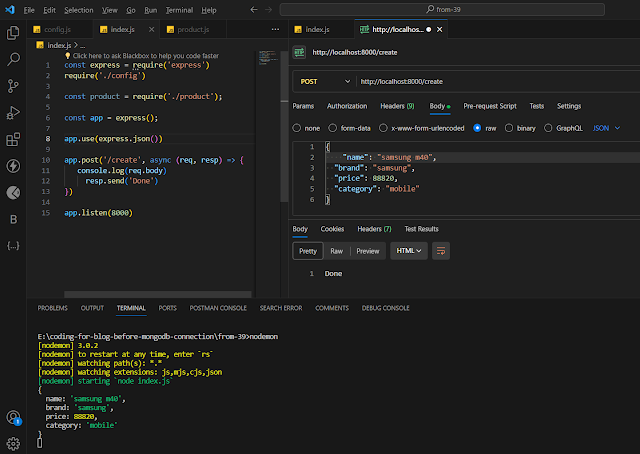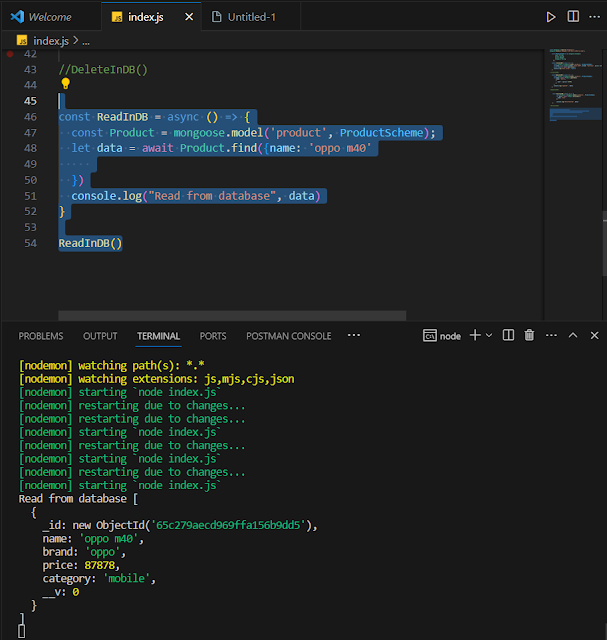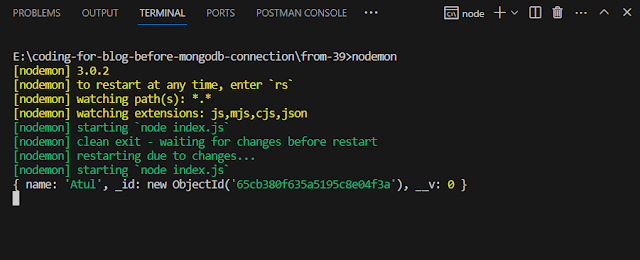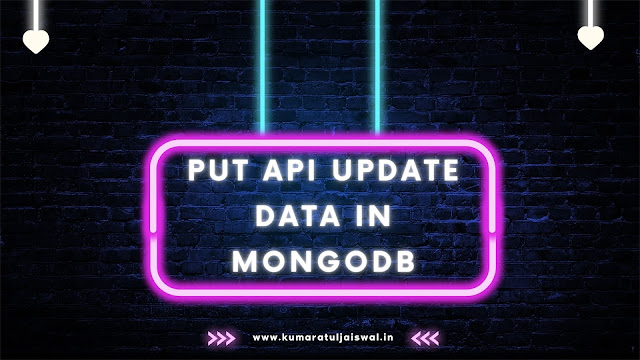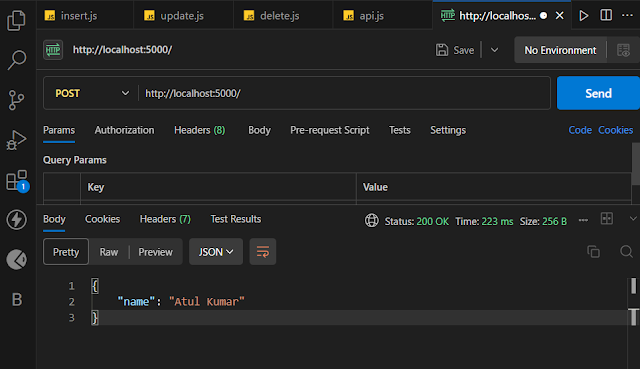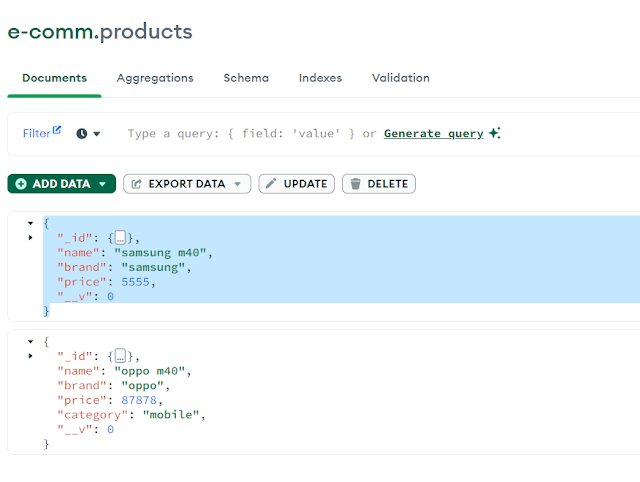Make Get Delete and Put API with mongoose in Nodejs
This blog we have seen mongodb basic and how is it
work with installation and after installation, we have already seen
mongodb basic, CRUD operation, connect mongodb with nodejs, read, update,
delete, POST, GET API etc.
we should not face
any problem while making Database, collection(table) and using the data in nodejs even whenever we will make
API. Read data from mongodb in nodejs
- # What is Mongoose
-
# Install Mongoose
-
# Example of GET Method API
-
# Example of DELETE Method API
-
# Example of PUT Method API
Now in this blog we will use mongoose. There is an
npm package to connect nodes to mongodb. Mongoose is a MongoDB object modeling tool designed to work
in an asynchronous environment. They created mongoose by improving
mongodb, with the help of which you can create schemas and models of mongoose's
movements.
Suppose that there are 4 fields in our database (like name, brand, price, category) and the user wants to add a 5th field also (like color) but we want
to add only 4 fields, for this we create schemas.
Here you can also define TYPE in schemas like price type is
numeric but if any user wants to use quotes (" " ' ') then we can stop the
user for this.
in sort we can apply validation in mongoose but we
can't in directly mongodb.
What is MongoDB
MongoDB is a popular open-source NoSQL (non-relational) database management system. NoSQL means no structure like it is look like an object while in SQL it is a structure query language like SELECT CustomerName, City FROM Customers; (The SELECT statement is used to select data from a database.) But NoSQL database is useless...NOT completely because of whenever we want add extra column in database then it is possible through NoSQL MongoDB.
MongoDB installation - CLICK HERE
MongoDB Basic Command -
CLICK HERE
About MongoDB vs SQL - CLICK HERE
CRUD in MongoDB - CLICK HERE
Object Like -
{
"_id": {
"$oid": "659ad46e0382148123c82841"
},
"name": "moto G60",
"brand": "motorola",
"price": 16500,
"category": "mobile"
}
MongoDB is a type of database that helps store and manage large amounts
of data in a flexible and scalable way. Unlike SQL, MongoDB doesn't require a
fixed structure for the data, allowing you to store information in a more
versatile format.
- MongoDB is a NoSQL database.
- The data stored in a collection
- Collection don't have row and columns
- Data is stored in the form of object.
Install Mongoose
For this you need to copy this (npm i mongoose) and paste it in project's
terminal.
CLICK HERE FOR POST METHOD - POST WITH MONGOOSE
Example of GET Method API
Here, we gonna write the code of get method with mongoose, you can also check the post method with mongoose. simple endpoint is our /list and we will promises (async and await).
app.get('/list', async (req, resp) => {
let data = await Product.find();
resp.send(data)
})
if we run this code with the help of nodemon index.js or node index.js you can see this.
Example of DELETE Method API
Now we are using delete method and inside the parameter we send the ID and through this ID we will delete the data from database.
Here we first simple console.log(done) checking for delete method is working or not.
app.delete('/delete/:id', async (req, resp) =>{
console.log(req.params);
resp.send("Done")
})
app.delete('/delete/:_id', async (req, resp) =>{
console.log(req.params);
let data = await Product.deleteOne({id :
req.params})
resp.send(data)
})
Here we breakdown the code and /delete/:_id this _id we will get from mongoDB dont worry i will showing you and we will use deleteOne method because of we want to delete the only one data from id number and we will get id from parameters.
Here, is acknowledged is true thats mean data is deleted.
Example of PUT Method API
With the PUT Method you can change the data means update the data through the _id, name whatever you want but mostly we will delete by _id.
app.put("/update/:_id", async (req, resp) => {
console.log(req.params)
let data = await Product.updateOne(
req.params, //it is condition
{
$set : req.body
}
);
resp.send(data)
})
updateOne method and req.params (it is condition ) and second one $set is represent what do you want to update. so in postman we will update the price of id.
Disclaimer
All tutorials are for informational and educational purposes only and have been made using our own routers, servers, websites and other vulnerable free resources. we do not contain any illegal activity. We believe that ethical hacking, information security and cyber security should be familiar subjects to anyone using digital information and computers. Hacking Truth is against misuse of the information and we strongly suggest against it. Please regard the word hacking as ethical hacking or penetration testing every time this word is used. We do not promote, encourage, support or excite any illegal activity or hacking.




%20-%20AX5400.jpg)










